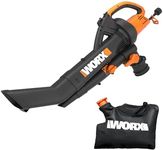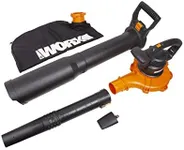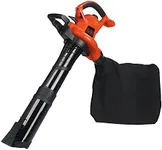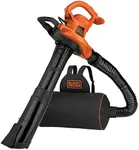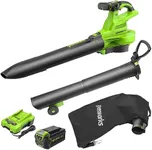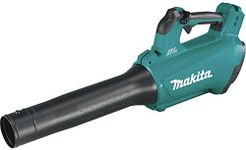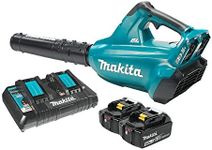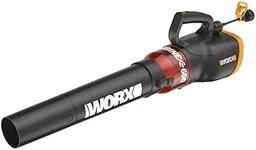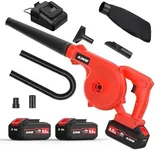Buying Guide for the Best Blower Vacs
When it comes to choosing a blower-vac, it's important to consider your specific needs and the features that will best suit your yard maintenance tasks. Blower-vacs are versatile tools that can help you keep your garden, driveway, and other outdoor areas clean and tidy by blowing away leaves and debris or vacuuming them up for easy disposal. To make an informed decision, you should understand the key specifications and how they relate to your requirements.Power SourceBlower-vacs can be powered by electricity (corded or cordless) or gasoline. Electric models are generally quieter, lighter, and require less maintenance, making them suitable for smaller yards and lighter tasks. Cordless models offer more mobility but have limited battery life. Gasoline-powered models are more powerful and can handle larger areas and tougher jobs, but they are heavier, noisier, and require more maintenance. Choose the power source based on the size of your yard and the intensity of the tasks you need to perform.
Air SpeedAir speed, measured in miles per hour (MPH), indicates how fast the air is blown out of the blower-vac. Higher air speeds can move heavier debris and cover larger areas more quickly. For light tasks like clearing leaves from a small yard, an air speed of 100-150 MPH may be sufficient. For larger areas or heavier debris, look for models with air speeds of 150-250 MPH or more. Consider the type of debris and the size of the area you need to clean when choosing the appropriate air speed.
Air VolumeAir volume, measured in cubic feet per minute (CFM), indicates the amount of air the blower-vac can move. Higher CFM values mean the tool can move more debris at once, making it more efficient for larger areas. For small to medium yards, a CFM of 200-400 may be adequate. For larger properties or more demanding tasks, look for models with a CFM of 400-600 or higher. Match the air volume to the size of your yard and the amount of debris you typically need to clear.
WeightThe weight of the blower-vac affects how easy it is to handle and use for extended periods. Lighter models, typically weighing 5-10 pounds, are easier to maneuver and are suitable for smaller tasks and users who may not have a lot of upper body strength. Heavier models, which can weigh 10-20 pounds or more, may offer more power but can be tiring to use for long periods. Consider your physical strength and the duration of your typical yard work sessions when choosing the weight of your blower-vac.
Noise LevelBlower-vacs can be quite noisy, with noise levels measured in decibels (dB). Quieter models, typically electric, produce around 60-70 dB, while more powerful gas models can exceed 100 dB. If you live in a noise-sensitive area or prefer a quieter operation, look for models with lower noise levels. Keep in mind that higher noise levels may require the use of hearing protection during operation.
Mulching RatioThe mulching ratio indicates how effectively the blower-vac can reduce the volume of collected debris. A higher mulching ratio means the tool can compress leaves and debris into a smaller volume, making disposal easier and reducing the number of bags needed. Ratios can range from 10:1 to 16:1 or higher. If you have a lot of leaves to collect and want to minimize the number of bags used, choose a blower-vac with a higher mulching ratio.
Ease of UseConsider features that make the blower-vac easier to use, such as ergonomic handles, adjustable speeds, and easy conversion between blowing and vacuuming modes. Look for models with intuitive controls and comfortable grips to reduce fatigue during use. If you plan to switch between blowing and vacuuming frequently, a tool-free conversion mechanism can save time and effort.
